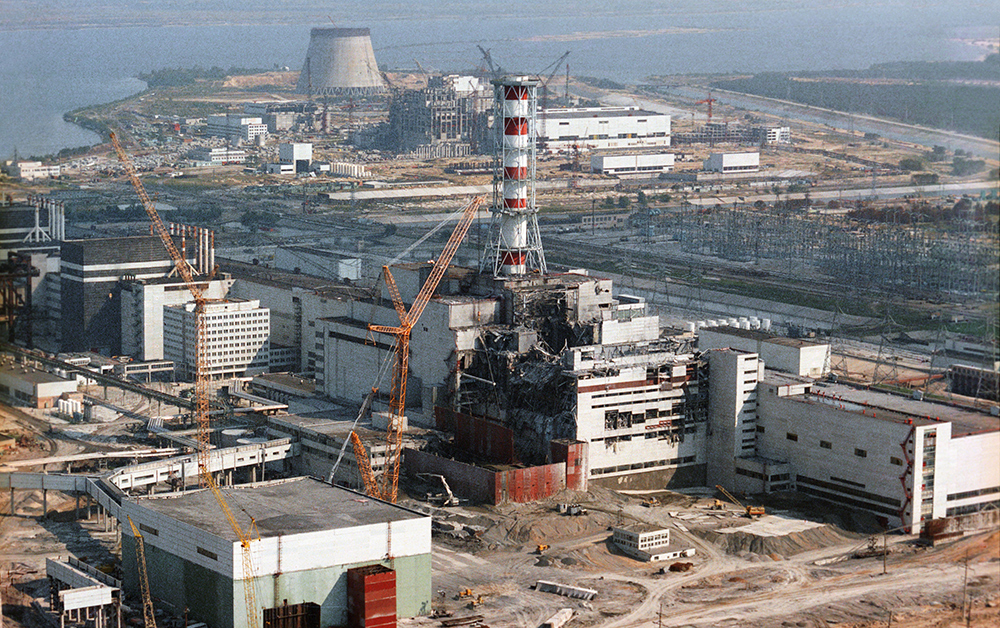Tiraspol, April 26. /Novosti Pridnestrovya/. On April 26, 1986, there took place one of the largest man-made disasters in the history of mankind - Chernobyl Nuclear Power Plant accident. Military and civilian specialists from all over the Soviet Union worked to eliminate the consequences of the accident.
At night, tests of the turbine generator were carried out at the 4th power unit of the Chernobyl Nuclear Power Plant (NPP). The scheduled shutdown of its reactor, which lasted 20 seconds, seemed like a routine electrical equipment testing. However, due to a sharp power surge, a chemical explosion occurred, as a result of which about 520 hazardous radionuclides were emitted into the atmosphere. The explosion was so huge that the pollution spread over large areas - more than 200 thousand square kilometers, of which 70% - on the territory of Ukraine, Belarus and Russia.
According to official data, 31 people died during the next days after the accident, while 600 thousand liquidators who took part in extinguishing the fires and clearing received high doses of radiation. Almost 8.5 million of Belarus, Ukraine and Russia residents were exposed to radiation. Agricultural land with an area of almost 52 thousand square kilometers was contaminated with cesium-137 and strontium-90 with half-lives of 30 and 28 years, respectively.
Representatives of the radiation control service, the Civil Defense Forces, the Chemical Troops of the Ministry of Defense, the State Hydrometeorology and the Ministry of Health were involved in the accident zone. In total, about 600 thousand specialists from all over the USSR took part in extinguishing fires and clearing territories: starting from filling an active area and cleaning the station from radioactive fragments to the construction of the Shelter (Sarcophagus). They blocked radioactive emissions into the environment, preventing global radiation pollution.
At the Chernobyl Nuclear Power Plant, about a thousand people who were near the reactor at the time of the disaster received doses from 2 to 20 sieverts (a dose of 8 sieverts is considered lethal). Each person receives an average equivalent dose of radiation from 2 to 5 millisieverts annually - this is the natural background radiation and the effect of medical procedures.
1837 residents of Pridnestrovie also took an active part in the liquidation of the Chernobyl disaster. From the first days, soldiers of the 14th Guards Army, workers, specialists from the Moldavian State District Power Plant, and medical workers were sent to the accident scene. Subsequently, many died due to radiation sickness, cancer, a large dose of radiation.
According to the Ministry of Social Labor, 307 people who participated in the elimination of the consequences of the accident live in the republic today, of which 127 are disabled.
The state provides social support to this category of citizens. Payments are received by:
• those who took part in the work to eliminate the consequences of the disaster;
• those who have received or have suffered radiation sickness or other diseases associated with radiation exposure;
• disabled people due to the Chernobyl Nuclear Power Plant disaster;
• servicemen and those liable for military service, called up for special training and brought in to eliminate the consequences of the disaster;
• health professionals who received radiation doses while providing assistance to victims of the Chernobyl accident;
• evacuated and resettled citizens.
According to the Law "On social protection of citizens affected by the Chernobyl disaster and other radiation or man-made disasters," the state provides them free of charge with prescription drugs. There are annual free passes to sanatoriums, dispensaries, rest homes and rehabilitation departments of health care institutions. Trips on public transport are free for the liquidators on the territory of the republic.
Chernobyl victims have the right to free production and repair of dentures in state polyclinics at their place of residence (with the exception of dentures made of precious metals, porcelain and metal-ceramics). Benefits for utility bills and preferential taxation are provided for liquidators.
The law also provides for monthly payments of compensation for harm caused to health in connection with radiation exposure








